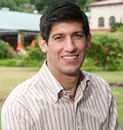Have you noticed the days getting shorter and the local kids walking to get to their first day of school? Or that the temperature has dropped a bit and you can actually sleep with a breeze coming through your bedroom at night? Well, if so, you’ve picked up on the fact that September is here and in turn the perfect time to get a good fire going in your fireplace!I actually like to make fires when it’s between, say, 55 – 60 degrees because, in most cases, you don’t need your central heating system to be on and you can enjoy a fire without it sucking all of the warm air from your home. You can start a fire when it’s warmer, but I don’t think you’ll enjoy the experience much.
Contrary to what most people think, fireplaces don’t provide much heat outside the area immediately in front of the hearth and a roaring fire actually robes the rest of your home of warm air (basically, the fire is looking for oxygen and grabs it from every room in your house). There are some exceptions; for example, a wood stove is an excellent, and highly efficient, wood burning machine!
So, when the outdoor temperature is right and you don’t have your heat running, keep the following 11 tips in mind when creating that perfect roaring fire:
- Open your damper (this is straightforward but you’ll be surprised how many people actually forget).
- Use good firewood. According to the US Forest Product Lab, Locus, Ash, and Beech are the best varieties. However, the most important attribute of firewood is that it is seasoned or dried for at least a year (this will allow the wood to burn cleanly and without any smoke; seasoned wood also burns hotter).
- Get a hold of some fatwood. Fatwood catches fires very quickly and stays lit long enough for your starter wood to get going. LL Bean sells fatwood, but you can probably find it locally for a better price/
- Get a hold of some starter wood (I usually walk around my yard and try to find some old, small, branches that have fallen and have become naturally seasoned). You can also ask your local wood delivery guy to supply some starter pieces for your stove or fireplace.
- You’ll need some old newspaper and matches, I like burning Ed-Ops I disagree with…
- Once you have the “ingredients” it’s time to build the fire. Start by crumpling 5-6 pieces of newspapers and placing it under your grate (don’t crumble the pieces to small or tight as they will not burn right). Next, place 6-7 pieces of firewood on top of your metal grate. Your smaller starter wood goes on top of the fatwood (don’t skimp here, try to include 8-10 good pieces), followed by 1-2 pieces of your regular firewood (look for the smallest pieces in your pile). Light the newspaper and watch the magic happen!
- The key to maintaining a fire is to produce red, glowing, embers that pile up underneath your grate. As soon as you have a good pile of embers you’ll be able to add new firewood and it will catch immediately.
- Poking the fire every 30 minutes or so will also feed new air into the wood pile and you’ll notice the flame picking up, as well.
- Whenever I plan to light a fire I make sure that we do not have any major plans for the day, so we do not need to, unexpectedly, leave the house for long periods of time.
- About 2-3 hours before you plan to leave the fire unattended, make sure you stop adding wood to the fire. This will ensure that the fire has some time to die down (NOTE: the fire and embers will still be extremely hot). You should make sure that your fireplace screen is on securely and at all times (except for when you are adding would of course), I’ve seen sparking embers fly 3-4 feet.
Enjoy the fire and make sure you have a good book, glass of wine, or the wife/husband with you!



You might want to rethink the newspaper in drier areas – on occasions, fires start in neighborhoods because the paper “flakes” catch the updraft and smolder on rooftops. Makes the neighbors less than thrilled.
I suppose in an environment like California where there are plenty of fires caused by dry conditions one may want to re-think how to start a fireplace fire. However, here on the East Coast I’ve never heard of flakes starting a fire or smoldering on your typical asphalt roof.
Vince